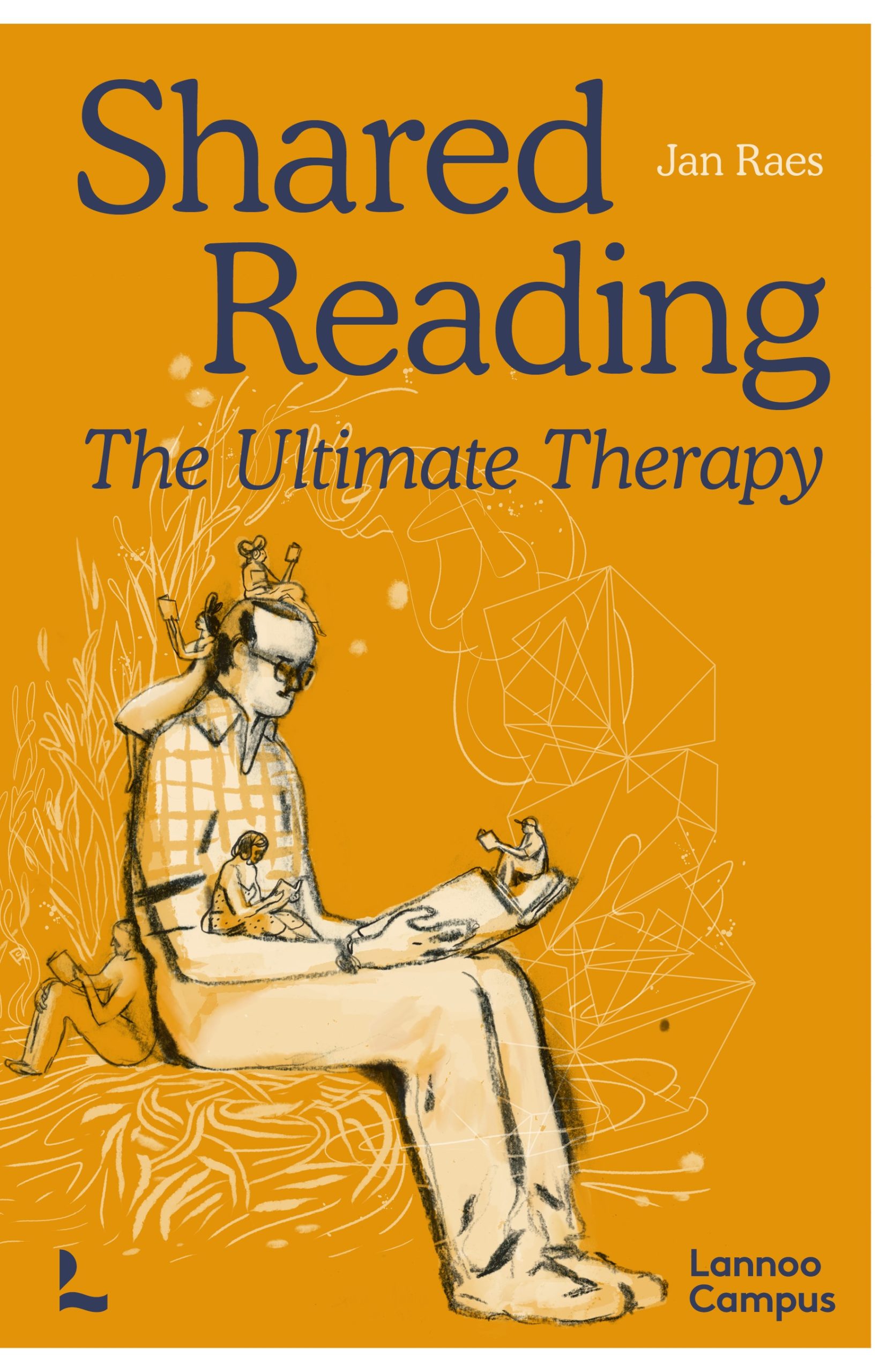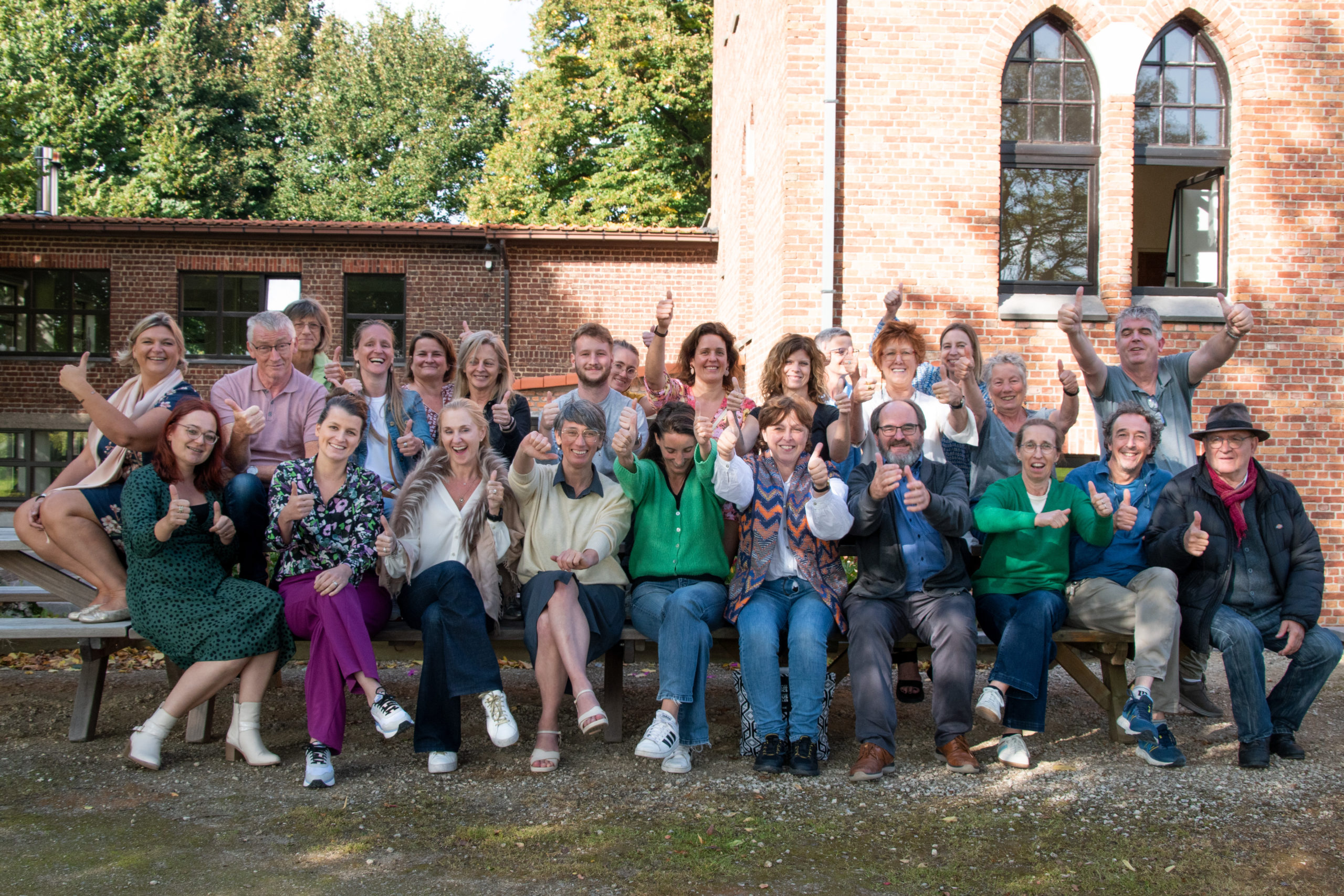Your basket is currently empty!
The ultimate therapy
Media
An interview with Prof. Dr. Phil Davis
People become mini-poets of their own lives’
Het Lezerscollectief and the positive effects of Shared Reading groups on seniors
Never too old to read
Shared Reading is not something you do alone
Belgium partnership strengthens the
international Shared Reading movement
Shared Reading: an expert’s opinion
Shared Reading is a key that opens a door
Shared Reading
It’s so good to see this new book by Dr Jan Raes, a practising psychiatrist who has been involved in building the Shared Reading movement in Flanders. In straightforward and down to earth language Dr Raes gives an account with some terrific examples of what Shared Reading is, what it can help people do and why the health and caring professions could benefit greatly from adopting the practice.
Jane Davis
Jan Steyaert about Shared Reading
Prof. Jan Steyaert is researcher, connected to University of Antwerp and Expertisecentrum Dementie Vlaanderen. Through cooperation with Het Lezerscollectief, Shared Reading finds its way in the daily life of elderly homes, service centers and informal care. Volunteers and employees are trained in a qualitative way and become part of a learning environment.“The diagnosis of dementia is often equated with palliative care, while there is still a lot of life, pleasure and enjoyment.”Shared Reading by Het Lezerscollectief is one of the good practices presented in the European project Dementia in Cultural Mediation.
Review

If you are searching for a meaningful activity that can inspire, connect, enrich and psychologically strengthen human beings, however broken they may be, search no longer. It is not therapy, it is something a bit different yet just as – or dare we say more? – effective. It is Shared Reading, which psychiatrist and co-founder of Het Lezerscollectief Dr. Jan Raes portrays as an inexpensive but rather efficient and rewarding intervention with remarkable therapeutic benefits.
In his recently published book, Shared Reading: The Ultimate Therapy, Raes builds a strong case for Shared Reading as an intervention that suffers from none of the disadvantages of traditional therapy, yet manages to bring about most if not all of the advantages. Studying the dynamics of Shared Reading groups in care settings and the impact this experience has on patients and clients, Raes has determined 5 key stages that group members go through which lead to positive change in their lives. This process of change, he explains, occurs in other life processes too, including the seasonal cycle of nature, the personal development of human beings or the way businesses and organisations function. Each stage forms the focus of one of the book’s five chapters and draws comparisons between Shared Reading and other, established therapy practices within care settings. The five stages are: 1. Starting 2. Growing 3. Harvesting 4. Learning 5. Relaxing. Each chapter finishes with a helpful list of things to keep in mind when leading your own Shared Reading group. This will undoubtedly be an invaluable summary to aspiring Reader Leaders, or newly trained Reader Leaders who need some crystal-clear guidance on how to grow in their role and create the best possible environments for group members to thrive.
The first phase in the journey towards positive change is ‘starting’. Raes explains how this first step is far from straightforward to people who experience illness or are in need of care. Most often, due to the limitations of their illness or the care institution they are dependent on, the world of patients or clients becomes increasingly narrower. Shared Reading can help people to find a way out of the routine they have had to adopt, and feel released from the feeling of ‘stuckness’ that often accompanies it. The texts that are read within the context of Shared Reading groups play a vital role here. The group leader will bring along a text which they’ll read aloud with the group. The text is chosen specifically because it contains multiple layers of possible meanings and therefore will invite multiple perspectives, which the group share with one another. To someone who feels stuck in their own thought patterns and can envisage only one possible path for themselves, new ways to interact with the world and new paths open up through the group reading and discussion of the text. While traditional therapy sets clear expectations and tasks for patients and clients, Shared Reading does not teach, admonish, or even expect a verbal contribution. Indirectly, however, group members feel stimulated to imagine alternative thought patterns, behaviours and paths they might take.
Growth, states Raes, is not something you can control or even orchestrate. Not even if you’re a therapist. However, you can create the best possible circumstances for someone to feel capable of exploring their full potential. Often, due to financial pressures and time constraints, care settings struggle to offer patients and clients opportunities for growth. This is where Shared Reading might provide an answer. Most groups are run by trained volunteers who will come into the care setting on a weekly basis, or by a trained staff member who can set aside an hour or so a week to read with a group of up to twelve people. In this weekly session of between one and two hours, group members step into the multifaceted world of a story that encourages interactions with others and other viewpoints. Raes mentions that during these interactions, group members’ brains show highly increased amounts of ‘mirror neurons’ which allow us to imitate behaviour of others but also to empathise with others’ emotions. Through these connections, Raes further states, group members will notice and perhaps even expand the boundaries of their own inner world, or their ‘mental- emotional space’.
“When people are trapped in a fixed pattern of thought and can only see one route through life, engaging in a conversation about a literary text can often help them to see that there are alternative pathways.”
Dr. Jan Raes.
The Ultimate Therapy, p.25
While Shared Reading sessions will offer plenty of opportunities to gain new insights, it is vital to let those insights gathered during the growing stage ‘land’ and harvest them more permanently. If not, the newly-acquired mental-emotional space might just shrink again. The harvesting phase implies that group members will use the insights to shape new perspectives themselves and become more flexible and resilient human beings. Again, Raes highlights that unlike the therapist, the Reader Leader will not intentionally analyse their group members and explicitly encourage them to develop new perspectives. However, in this open yet respectful sharing of perspectives, group members will naturally gain new insights and broaden their perspectives.
The final two stages determined by Raes are often, he says, ignored in our modern society which focuses so heavily on continuous growth and output. They are ‘learning’ and ‘relaxing’. Learning, Raes explains, is very much about going through everything you’ve acquired and carefully deciding which bits to hold onto and which bits to let go of. The introspection that is central to this stage requires a deliberate slowing down, which is something that Shared Reading compels group members to do. The way in which the text is read – aloud, slowly, pausing to discuss and share thoughts, leaving silences – encourages this slowing down and gives group members opportunities to tidy up in their own heads. The many processing opportunities may help group members to let go of certain painful aspects of their own pasts, of certain behaviours, fixations, and embrace others that they have acquired during the harvesting stage.
Finally, then, we reach the ‘Relaxing’ stage, which is a kind of refuelling before starting the cycle all over again. While it may not give us any concrete output, or measurable profit, Raes convinces us that this stage is vital if we as human beings, or the businesses and organisations that we lead, are to be sustainable and resilient, especially when going through major crises such as the current pandemic. If we only focus on expanding, growing and hurrying on, we might burn out along the way. Yet to reflect is often quite a daunting task to many of us. The Shared Reading group helps group members to relax and take stock. How do we really feel? What do we really think? The group helps group members to listen a bit more carefully to an inner voice and gives them insights in how to deal with that voice. Shared Reading recognises that we all are looking for meaning in our own lives, no matter who we are, and whether we live in a care setting or not.
There can be no better way to find out about the restorative power of Shared Reading than through experiencing it first-hand. The next best thing is to sit down with this perceptive book by Jan Raes to discover the ins and outs of the Shared Reading experience, and its tremendous therapeutic potential. This book will no doubt become a kind of ‘bible’ to many Reader Leaders starting out on their own Shared Reading journey, but it may equally persuade (care) organisations and businesses of the tremendous positive impact that this simple and non-expensive activity may have on their workforce, patients and clients.
Sophie Verbeke

